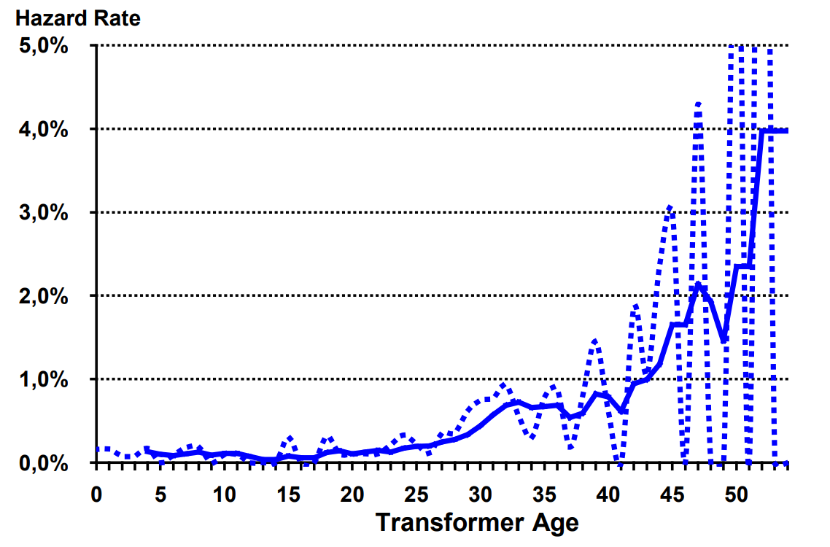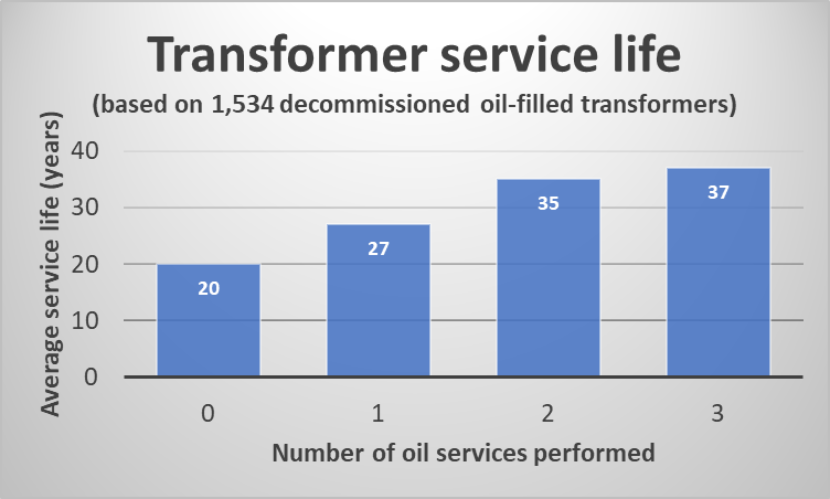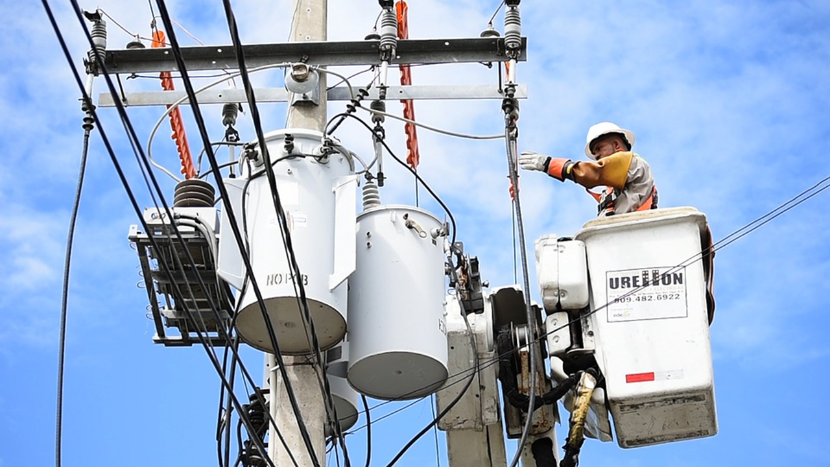“At the end of this day, one shall stand, one shall fall.” — Optimus Prime, Transformers: The Movie
I have never been to a process plant that could continue running without electrical power. So, it is not uncommon to see a plant with two separate electrical feeds, each with their own transformers. On most days, they both run just fine. But we worry about the day when “one shall stand, one shall fall.” We worry even more about the day when both shall fall.
While the probability of two separate transformers failing at the same time is not zero, it is very low.
Is it low enough?
Life Expectancy of Transformers
After a transformer is installed and makes it though the burn-in period, some researchers put the expected life of power transformers in the range of 25 to 40 years. Electrical Technology describes the normal life expectancy of transformers as about 20 to 30 years and acknowledges that a transformer might last for more than 50 years. Menzies puts the life expectancy of industrial transformers at 20 to 25 years, but notes that under ideal conditions, transformers can be expected to operate for 30 to 40 years.
As with all components, however, there is some probability that a power transformer will fail earlier than its expected life, just as there is some probability that a power transformer will last well beyond its expected life. It is in understanding these failure rates that we can get at an understanding of the probability of one transformer failing, and in the case of two transformers, of simultaneous failure.
The Bathtub Curve
The failure rate of components follows a trend called a “bathtub curve” where the failure rate starts high and quickly drops (the burn-in period), followed by a low, constant failure rate period, and ending in the wear-out period where the failure rate steadily increases with time. A team at the University of Stuttgart looked at failure data collected from 20 different utilities after the burn-in period was past, and constructed the bathtub curve in Figure 1.

Figure 1. Bathtub curve for power transformers. Annual data (dashed line) and five-year moving average (solid line). (S.Tenbohlen, 2011)
During the constant rate period, the failure rate, λ, is about 0.0002 failures/year per transformer. Then, at about age 20~25 years, the failure rate begins to climb, reaching 0.01 at age 40, 0.025 at age 50, and over 0.05 at age 60. This curve is completely consistent with the different ranges observed by different authors. In fact, it explains the differences.
A failure rate of 0.05 failures per year per transformer is not a guarantee that a transformer will fail during the year it is at that failure rate. In fact, there is less than a 5% probability that it will fail that year. Better odds than Russian roulette. But who wants to play Russian roulette with their transformers?
The equation for the average probability of failure on demand for a single device is
PFDavg = λt/2
During the constant rate period—the normal life by most measures—the average probability of failure on demand, PFDavg, for a single transformer with a λ of 0.0002 failures/year per transformer is 0.25% for the entire 25-year period. The probability of failure during a single year of the normal life of a power transformer is 0.01%
In the same work, Tenbohlen and co-authors report data giving the overall failure rate for power transformers at 0.0047 failures/year per transformer, but they include data for failures that occur well beyond the constant rate period, the normal life of a transformer.
Causes of Transformer Failure
While the literature is full of examples of transformer failures caused by collisions with utility poles and squirrels chewing through cables, a common cause of transformer failure is failure of the dielectric fluid. Mineral oils are the most common dielectric fluid, providing both insulation and cooling within the transformers. However, they can absorb water with time, and that moisture leads to degradation of the cellulose paper within the transformer, leading to failure.
Lee Murray, with SDMyers shared the data in Figure 2 regarding the impact of servicing the oil in transformers on the service life of transformers.

Figure 2. When transformer oil is serviced, contaminated oil is replaced, extending the life of the transformer. (Murray, 2019)
An analysis of this data shows that the portion of failures prevented by oil servicing is about 60%. There are other causes, of course, and it is the totality of all these causes that lead to the overall failure rate shown in Figure 1.
Redundant Transformers and Common Cause Failures
When a facility uses two separate feeds, each with their own transformers, they do it because the consequences of a power outage are severe. To avoid common cause failures, a tractor-trailer crash, for instance, they place the feeds at separate locations, ideally fed from separate substations. Even when all of these things are in place, there is still some probability of both transformers being in a failed state at the same time. A 1oo2 architecture is more reliable than a 1oo1 architecture, but it is not perfect.
The general equation for the average probability of failure for two components in a 1oo2 architecture is
PFDavg = (λt)2/3
During the normal 25-year life of two transformers, the PFDavg is 0.000008. It’s not zero, but 1 in 120,000 for a 25-year span of time is really low. So low, in fact, that the average probability of losing the electrical grid that supplies power to the region is far more probable.
Unfortunately, loss of the electrical grid is beyond the control of any facility. In that case, the facility needs to rely on a different source of power, such as an emergency generator.
As transformers age past their normal 25-year life, however, their failure rate increases, along with the PFDavg. The PFDavg of two transformers in a 1oo2 architecture also increases. At 50 years, when the failure rate is about 0.025 failures/year per transformer, the PFDavg for a 1oo2 architecture for that one year is 25 times higher than it was for the entire normal life of the transformers.
Transformers Have a Low PFDavg…Until They Don’t
Transformers are so reliable that we sometimes forget that they can fail. They often go their entire useful life without any service. When we install a redundant power transformer, it is more often out of an abundance of caution than on the basis of risk calculations. But power transformers have a finite life expectancy, and many power transformers are reaching or are at the end of their normal life.
That doesn’t mean that they will immediately fail. But the probability of failure increases with every year past their normal life expectancy. If redundant power transformers were installed at the same time, they will age past their normal life expectancy at the same time. At some point, they will fail.
Plan for Aging
The life expectancy of a power transformer can be extended with good maintenance. While it’s never too late to start good maintenance, some deterioration cannot be reversed. As you consider the reliability of your power supply, consider the age of your transformers and plan accordingly. This is true, even when you have redundant power supplies, so that when one falls, the other remains standing—at least long enough for you to recover.
